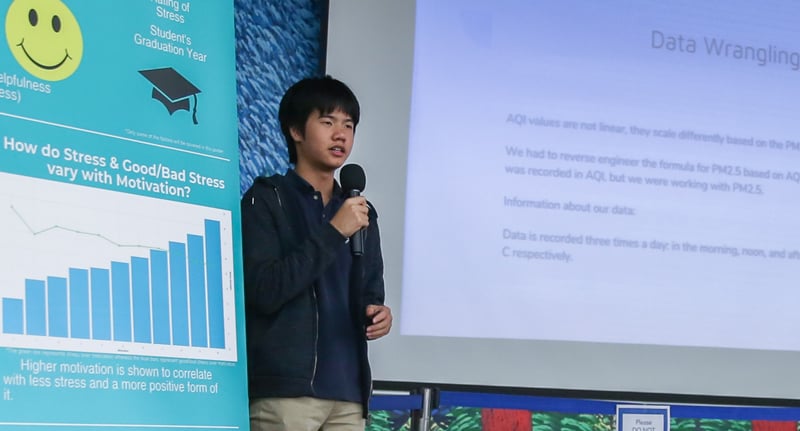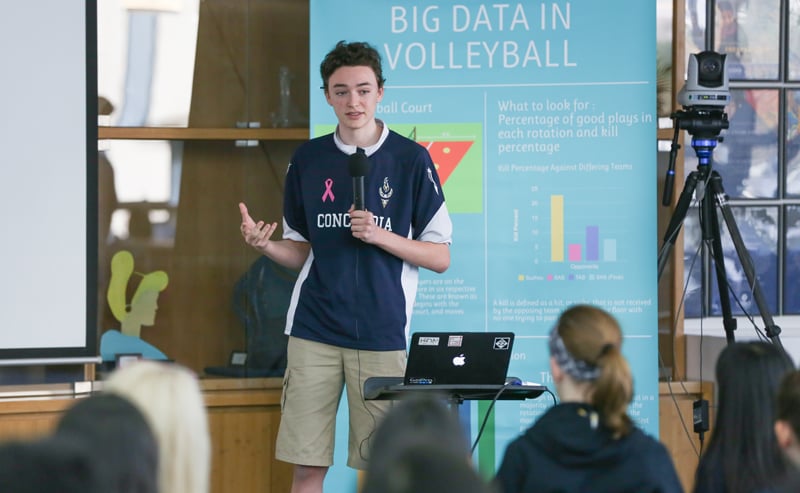Preparing students for future careers
Recognizing the importance of preparing students for careers in the growing field of data analysis, Concordia International School Shanghai introduced a Big Data Analytics (BDA) course in its high school in 2014, despite there being no established teaching resources of any kind for Big Data at the high school level. A relatively new subject matter such as this, where information is rapidly evolving, presents challenges to assembling current material from which students can refer. Hence, it is important for students to learn how to teach themselves; how to develop learning material and techniques; how to look for information; and, how to effectively communicate that information to others.
Exploring Big Data concepts with a student-centered approach
A “guide on the side” approach and a structured framework of clear guidelines, objectives and goals for the course permits students take an active role in their learning. The method brings out the strengths and insights of the students while allowing them to make improvements to their areas of weakness through their investigation of the subject matter. Learning skills acquired through “guide on the side” not only provides opportunity for students to learn subject matter in the classroom but also gives students the tools to teach themselves in future new subject areas.
BDA lessons include source materials from Viktor Mayer-Schönberger’s and Kenneth Cukier’s Big Data: A Revolution That Will Transform How We Live, Work, and Think, along with clarifying images, video clips, and short readings. While the general concepts of Big Data are taught through student lectures and peer discussions, the practical learning of this course occurs through its applications. The teacher incorporates both group and individual projects in coordination with the BDA course educational goals, with reference to Bloom’s taxonomy as checkpoints: Knowledge, Comprehension, Application, Analysis, Synthesis, and Evaluation. The students are given in-class time for peer discussions and to further research the materials taught after each lecture. At the end of each subsection the students orally present their knowledge and comprehension of the material by creating summaries of topics through multiple means.
Connecting students to the real world
Teaching BDA is most efficient when the teaching method reflects the open-ended and perpetual nature of information as it currently materializes. Big Data University academicians are brought in as guest lecturers, in person or via Skype. The guest lecturers are an important element of this course as they provide external feedback from experts and give students a prime opportunity to learn the relevance and potential of Big Data in post-secondary education and beyond.
Since this course is designed to be student-centered and to highlight the students’ strengths and interests, students are required to research their topic of interest on Big Data applications. However, the final presentation is more than a summation of their research interests; it requires a large-scale info-graphic and presentation to the school’s administration team and the parent community, many of whom are industry professionals. The opportunity to present these findings to an audience of high-level business people takes advantage of the human resources available in the community and adds a level of achievement for the students: professional interaction and showcasing.
The overall outcome of the BDA course at Concordia has surpassed initial expectations. The course connects students to their school, and local and global communities, in addition to the academic community, and also provides opportunity for cross-curricular cooperation. Courses such as BDA push beyond the mere retention and application of knowledge, and extends to the ability to create a confident learning environment, where students gain assurance in their learning abilities and become confident in their roles as lifelong learners.







